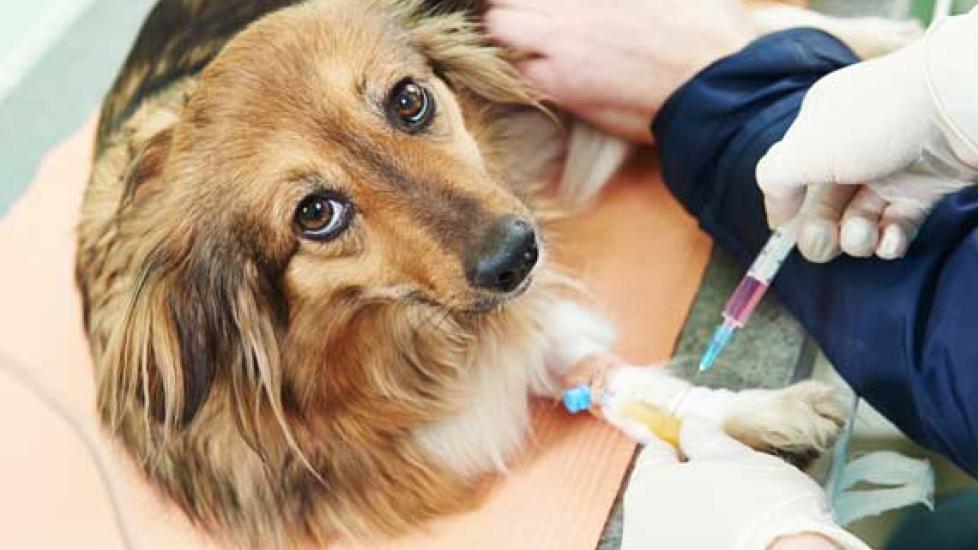The Cancer Side Effect No One Wants to Talk About
We’re familiar with the more common side effects associated with chemotherapy treatments: nausea, vomiting, lethargy, and hair loss. We all too easily relate to such signs, whether a result of our own personal experience, or those of friends/loved ones, or even through different media outlets.
In veterinary oncology, every precaution is taken to limit such side effects. We accept a much lower rate of toxicity in dogs and cats, so our initial drug doses tend to be lower than our human counterparts. If side effects do occur, we are quick to reduce future dosages or delay treatments, keeping our patient’s safety at the forefront of concern. We want our patients to remain happy and healthy while enduring their protocols and to remain oblivious to the potentially negative repercussions of such serious remedies.
There’s one side effect from chemotherapy that both veterinary and human oncologists remain persistently unable to adequately control. No matter how much effort we put in to preventing it, we are at the mercy of this most disturbing of adverse treatment-related injury. The concern we are speaking of is called financial toxicity.
Financial toxicity, a term first coined by researchers in a study published in The Oncologist in 2013, describes how the “out-of-pocket expenses” of cancer treatment further drain the already stretched emotional and personal reserves of cancer patients, ultimately causing a significant decline in their overall quality of life and, in its most severe form, becoming an actual, palpable adverse side-event of treatment, leading to cessation of treatment.
In the aforementioned study, researchers compared the results of surveys evaluating the impact of health care costs on well-being and treatment of cancer patients who contacted a national copayment assistance foundation with those from patients treated at an academic medical center. The results are staggering.
Among 254 participants, 75% applied for drug copayment assistance. Forty-two percent of participants reported a significant or catastrophic subjective financial burden; 68% cut back on leisure activities, 46% reduced spending on food and clothing, and 46% used savings to defray out-of-pocket expenses.
To save money, 20% took less than the prescribed amount of medication, 19% partially filled prescriptions, and 24% avoided filling prescriptions altogether.
Copayment assistance applicants were more likely than non-applicants to employ at least one of these strategies to defray costs (98% vs. 78%).
One conclusion from the study is that financial toxicity has both an objective side (a true enumeration of the burden the treatment places on the affected individual) as well as a subjective side (the less tangible distress the burden of treatment places on the patient).
Another conclusion was that the consequences of financial toxicity reach far beyond the checkbook and extend into influencing important demographic information including response rates and survival statistics. Patients may actually stop taking medications, or even stop treatment entirely, because of the rising costs of their own healthcare and the burden this places on their lives.
Not surprisingly, though financial toxicity isn’t typically discussed as an “actual” side effect in veterinary medicine, money plays a huge role in the oncological care for companion animals. Having worked directly in the trenches for so long, I would even venture that veterinarians deal with financial toxicity far more frequently than our human doctor counterparts.
When cancer strikes a beloved pet, in addition to the emotional toll, the majority of owners must, at some point, consider the monetary impact of the diagnosis. Unlike humans diagnosed with cancer, our pets typically lack comprehensive healthcare to cover even routine costs, let along oncological care.
A long-standing joke in veterinary medicine is to be wary of the owner who states “money isn’t an issue,” as most often it’s not an issue because they don’t have any. Cancer generally always imparts a sense of urgency, and I’ve witnessed many times where owners will make decisions regarding their pet’s care without full consideration of finances. In all seriousness, I have no way of knowing whether an owner who is giving me free reign to move forward with diagnostics and/or treatments is really able to afford things, or if they are making decisions based on emotions.
I’ve seen many reactions to the cost of chemotherapy for pets. Most owners are well prepared by their primary care veterinarians for estimates of what different treatment plans could cost. There are definitely cases of complete “sticker shock,” where the numbers I discuss are not at all on par with what the owners were anticipating. Other times the reaction is the polar opposite, where there’s great surprise and the treatment is considered inexpensive.
There’s not much I can do to control the cost of veterinary oncology care. Unfortunately, pricing schemes are complex; dictated by factors well beyond my professional “jurisdiction.” But it’s not enough for me to discuss only the physical signs associated with treatment when talking about side effects with owners. I’m equally responsible for attempting to prevent financial toxicity when I can.
As is true for so many aspects of veterinary medicine (and life in general), clear communication is essential to ensuring everyone is on the same page. Your veterinarian should never judge you for deciding to put finances first when considering how to proceed with your pet’s care. And you should never judge your doctor for talking candidly about prices, estimates, costs, and expectations. I’ve been placed in that situation more times than I’d care to admit, and it’s unpleasant for all parties.
We may not be able to eliminate financial toxicity from our treatment regimen, but veterinarians and owners both have a responsibility for making sure we pay close attention to even the subtlest signs of this important side effect. If we treat it as urgently and effectively as we do the more obvious signs, we’re guaranteed to reduce its impact and to further ensure that we maintain our patient’s quality of life, both in and out of the veterinary clinic.

Dr. Joanne Intile
Image: Dmitry Kalinovsky / Shutterstock
